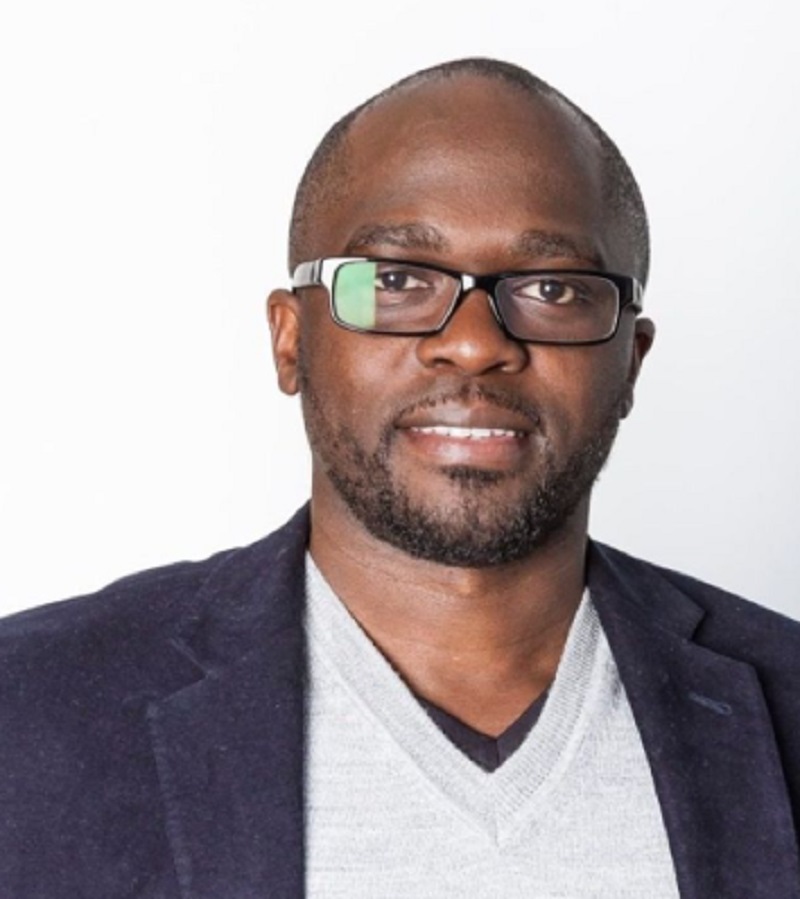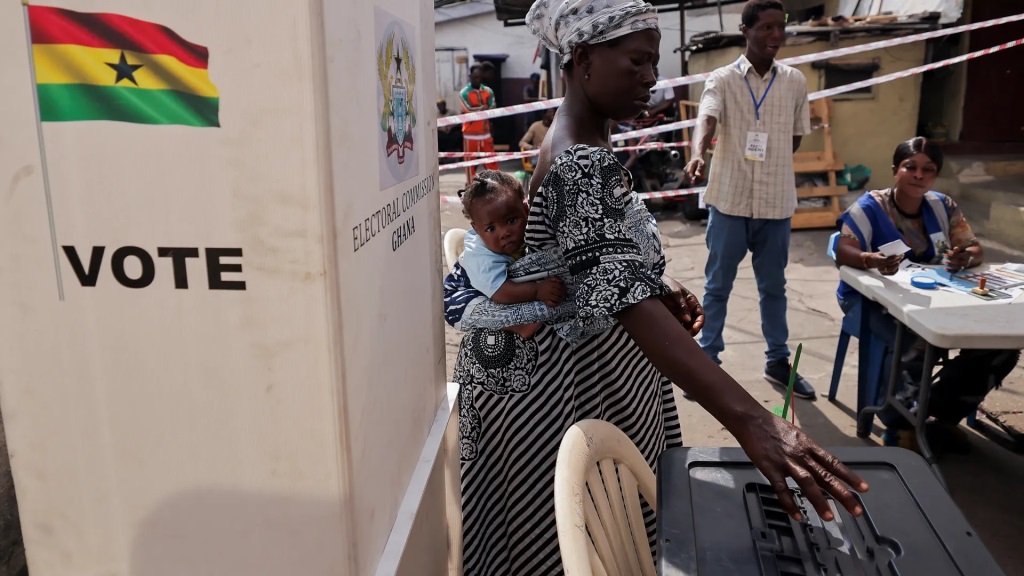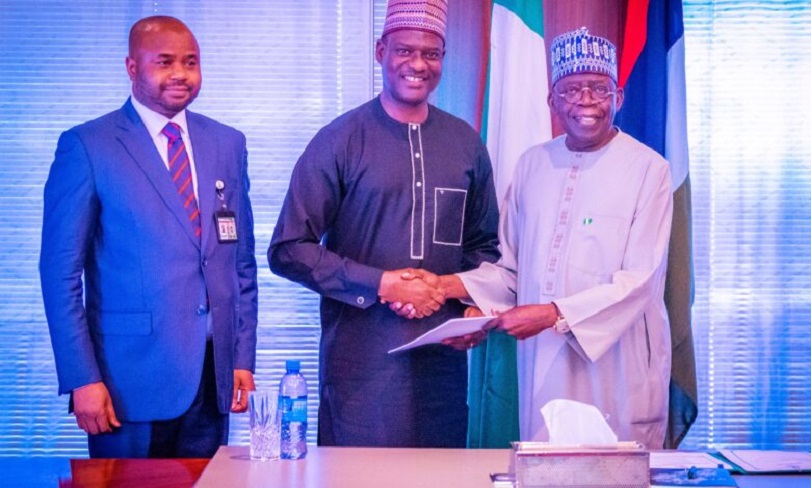Feature/OPED
The Street Hawking Test: AfCFTA, AU, ECO, ECOWAS, Human Rights & WAMZ

By Nneka Okumazie
Any policy in sub-Saharan Africa, by any government or union of nations, that does not mitigate or deject street hawking, is probably good for the optics, policymakers, or those benefitting from the regular gatherings – to nowhere.
Street hawking should be appalling to any African government, union, state, or region, as something to solve, or stop – not by chasing them from their spots.
Sub-Saharan Africa is vitiated by catastrophic poverty, which the bottom or close to, is street hawking, or selling in road traffic.
People are helpless. It is hard to feed. They have to keep buying things in a market that prices continue to rise. Some children have to hawk. Some have to run in traffic, expending energy, selling stuff, sometimes at really low margins.
It is easy to blame the poor, or to feel they are exactly responsible for where they are, but that is not always the case.
Those born poor are likely to live and die poor – in a country or continent – with policies that do nothing for the poor.
Maybe that’s the reason poverty has conspicuously increased.
Yes, there are more investments and growing democracies.
Some people are likely to get out of poverty through education and honest work, but the complications of underdevelopment dilutes what should be obvious and collective success against it.
There has always been a disconnection between policy and poverty.
It is almost like anything can be done without consideration for how it would perceptibly – and persistently – lift people out of poverty.
It is true that investment creates new jobs, but for many, their expenditures or economic uncertainties catches up with the new income, leaving them struggling, in debt and seeking shortcuts or new opportunities.
This low variance economic mobility makes direct action against poverty, necessary, in Africa – using capitalistic models.
Many people have different understanding or definition of what it means to be poor, therefore it is better to look at those hawking against a new policy and how it makes them stop.
If any region wants a new currency, no problem, but how does it reduce street hawking?
There are already multiple countries in sub-Saharan Africa using the same currency.
There are some using two currencies.
The problem is not currency, though there are ways it would help. But how does a uniform currency discourage or reduce street hawking?
Even the AfCFTA – in its infancy – how does it reduce street hawking?
Some Africans in other continents hawk, maybe not with stuff on the head, but holding on the hand, going from place to place.
Some don’t hawk but sell on the floor – in a pattern – outside the norm of the society.
What many of the host nations see with that is used to judge the continent and other people of the same colour.
This shows that hawking has been seen, by many, as the only way to survive, knowing nothing else.
Assuming hawking had been fought by prosperity, or productivity models against poverty, maybe that would not be so, for many Africans.
For those poor, helpless, uncertain, finding themselves in situation of despair and despondency, but believe in the Lord. They should remember:
[Isaiah 3:10, Say ye to the righteous, that [it shall be] well [with him]: for they shall eat the fruit of their doings.]
Feature/OPED
The Future of Payments: Key Trends to Watch in 2025

By Luke Kyohere
The global payments landscape is undergoing a rapid transformation. New technologies coupled with the rising demand for seamless, secure, and efficient transactions has spurred on an exciting new era of innovation and growth. With 2025 fast approaching, here are important trends that will shape the future of payments:
1. The rise of real-time payments
Until recently, real-time payments have been used in Africa for cross-border mobile money payments, but less so for traditional payments. We are seeing companies like Mastercard investing in this area, as well as central banks in Africa putting focus on this.
2. Cashless payments will increase
In 2025, we will see the continued acceleration of cashless payments across Africa. B2B payments in particular will also increase. Digital payments began between individuals but are now becoming commonplace for larger corporate transactions.
3. Digital currency will hit mainstream
In the cryptocurrency space, we will see an increase in the use of stablecoins like United States Digital Currency (USDC) and Tether (USDT) which are linked to US dollars. These will come to replace traditional cryptocurrencies as their price point is more stable. This year, many countries will begin preparing for Central Bank Digital Currencies (CBDCs), government-backed digital currencies which use blockchain.
The increased uptake of digital currencies reflects the maturity of distributed ledger technology and improved API availability.
4. Increased government oversight
As adoption of digital currencies will increase, governments will also put more focus into monitoring these flows. In particular, this will centre on companies and banks rather than individuals. The goal of this will be to control and occasionally curb runaway foreign exchange (FX) rates.
5. Business leaders buy into AI technology
In 2025, we will see many business leaders buying into AI through respected providers relying on well-researched platforms and huge data sets. Most companies don’t have the budget to invest in their own research and development in AI, so many are now opting to ‘buy’ into the technology rather than ‘build’ it themselves. Moreover, many businesses are concerned about the risks associated with data ownership and accuracy so buying software is another way to avoid this risk.
6. Continued AI Adoption in Payments
In payments, the proliferation of AI will continue to improve user experience and increase security. To detect fraud, AI is used to track patterns and payment flows in real-time. If unusual activity is detected, the technology can be used to flag or even block payments which may be fraudulent.
When it comes to user experience, we will also see AI being used to improve the interface design of payment platforms. The technology will also increasingly be used for translation for international payment platforms.
7. Rise of Super Apps
To get more from their platforms, mobile network operators are building comprehensive service platforms, integrating multiple payment experiences into a single app. This reflects the shift of many users moving from text-based services to mobile apps. Rather than offering a single service, super apps are packing many other services into a single app. For example, apps which may have previously been used primarily for lending, now have options for saving and paying bills.
8. Business strategy shift
Recent major technological changes will force business leaders to focus on much shorter prediction and reaction cycles. Because the rate of change has been unprecedented in the past year, this will force decision-makers to adapt quickly, be decisive and nimble.
As the payments space evolves, businesses, banks, and governments must continually embrace innovation, collaboration, and prioritise customer needs. These efforts build a more inclusive, secure, and efficient payment system that supports local to global economic growth – enabling true financial inclusion across borders.
Luke Kyohere is the Group Chief Product and Innovation Officer at Onafriq
Feature/OPED
Ghana’s Democratic Triumph: A Call to Action for Nigeria’s 2027 Elections

In a heartfelt statement released today, the Conference of Nigeria Political Parties (CNPP) has extended its warmest congratulations to Ghana’s President-Elect, emphasizing the importance of learning from Ghana’s recent electoral success as Nigeria gears up for its 2027 general elections.
In a statement signed by its Deputy National Publicity Secretary, Comrade James Ezema, the CNPP highlighted the need for Nigeria to reclaim its status as a leader in democratic governance in Africa.
“The recent victory of Ghana’s President-Elect is a testament to the maturity and resilience of Ghana’s democracy,” the CNPP stated. “As we celebrate this achievement, we must reflect on the lessons that Nigeria can learn from our West African neighbour.”
The CNPP’s message underscored the significance of free, fair, and credible elections, a standard that Ghana has set and one that Nigeria has previously achieved under former President Goodluck Jonathan in 2015. “It is high time for Nigeria to reclaim its position as a beacon of democracy in Africa,” the CNPP asserted, calling for a renewed commitment to the electoral process.
Central to CNPP’s message is the insistence that “the will of the people must be supreme in Nigeria’s electoral processes.” The umbrella body of all registered political parties and political associations in Nigeria CNPP emphasized the necessity of an electoral system that genuinely reflects the wishes of the Nigerian populace. “We must strive to create an environment where elections are free from manipulation, violence, and intimidation,” the CNPP urged, calling on the Independent National Electoral Commission (INEC) to take decisive action to ensure the integrity of the electoral process.
The CNPP also expressed concern over premature declarations regarding the 2027 elections, stating, “It is disheartening to note that some individuals are already announcing that there is no vacancy in Aso Rock in 2027. This kind of statement not only undermines the democratic principles that our nation holds dear but also distracts from the pressing need for the current administration to earn the trust of the electorate.”
The CNPP viewed the upcoming elections as a pivotal moment for Nigeria. “The 2027 general elections present a unique opportunity for Nigeria to reclaim its position as a leader in democratic governance in Africa,” it remarked. The body called on all stakeholders — including the executive, legislature, judiciary, the Independent National Electoral Commission (INEC), and civil society organisations — to collaborate in ensuring that elections are transparent, credible, and reflective of the will of the Nigerian people.
As the most populous African country prepares for the 2027 elections, the CNPP urged all Nigerians to remain vigilant and committed to democratic principles. “We must work together to ensure that our elections are free from violence, intimidation, and manipulation,” the statement stated, reaffirming the CNPP’s commitment to promoting a peaceful and credible electoral process.
In conclusion, the CNPP congratulated the President-Elect of Ghana and the Ghanaian people on their remarkable achievements.
“We look forward to learning from their experience and working together to strengthen democracy in our region,” the CNPP concluded.
Feature/OPED
The Need to Promote Equality, Equity and Fairness in Nigeria’s Proposed Tax Reforms

By Kenechukwu Aguolu
The proposed tax reform, involving four tax bills introduced by the Federal Government, has received significant criticism. Notably, it was rejected by the Governors’ Forum but was still forwarded to the National Assembly. Unlike the various bold economic decisions made by this government, concessions will likely need to be made on these tax reforms, which involve legislative amendments and therefore cannot be imposed by the executive. This article highlights the purposes of taxation, the qualities of a good tax system, and some of the implications of the proposed tax reforms.
One of the major purposes of taxation is to generate revenue for the government to finance its activities. A good tax system should raise sufficient revenue for the government to fund its operations, and support economic and infrastructural development. For any country to achieve meaningful progress, its tax-to-GDP ratio should be at least 15%. Currently, Nigeria’s tax-to-GDP ratio is less than 11%. The proposed tax reforms aim to increase this ratio to 18% within the next three years.
A good tax system should also promote income redistribution and equality by implementing progressive tax policies. In line with this, the proposed tax reforms favour low-income earners. For example, individuals earning less than one million naira annually are exempted from personal income tax. Additionally, essential goods and services such as food, accommodation, and transportation, which constitute a significant portion of household consumption for low- and middle-income groups, are to be exempted from VAT.
In addition to equality, a good tax system should ensure equity and fairness, a key area of contention surrounding the proposed reforms. If implemented, the amendments to the Value Added Tax could lead to a significant reduction in the federal allocation for some states; impairing their ability to finance government operations and development projects. The VAT amendments should be holistically revisited to promote fairness and national unity.
The establishment of a single agency to collect government taxes, the Nigeria Revenue Service, could reduce loopholes that have previously resulted in revenue losses, provided proper controls are put in place. It is logically easier to monitor revenue collection by one agency than by multiple agencies. However, this is not a magical solution. With automation, revenue collection can be seamless whether it is managed by one agency or several, as long as monitoring and accountability measures are implemented effectively.
The proposed tax reforms by the Federal Government are well-intentioned. However, all concerns raised by Nigerians should be looked into, and concessions should be made where necessary. Policies are more effective when they are adapted to suit the unique characteristics of a nation, rather than adopted wholesale. A good tax system should aim to raise sufficient revenue, ensure equitable income distribution, and promote equality, equity, and fairness.
-

 Feature/OPED5 years ago
Feature/OPED5 years agoDavos was Different this year
-
Travel/Tourism8 years ago
Lagos Seals Western Lodge Hotel In Ikorodu
-

 Showbiz2 years ago
Showbiz2 years agoEstranged Lover Releases Videos of Empress Njamah Bathing
-

 Banking6 years ago
Banking6 years agoSort Codes of GTBank Branches in Nigeria
-

 Economy2 years ago
Economy2 years agoSubsidy Removal: CNG at N130 Per Litre Cheaper Than Petrol—IPMAN
-

 Banking2 years ago
Banking2 years agoFirst Bank Announces Planned Downtime
-

 Sports2 years ago
Sports2 years agoHighest Paid Nigerian Footballer – How Much Do Nigerian Footballers Earn
-

 Technology4 years ago
Technology4 years agoHow To Link Your MTN, Airtel, Glo, 9mobile Lines to NIN












